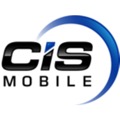2022 - Cambridge Quantum (now Quantinuum)
Simon joined Cambridge to help government and critical infrastructure clients drive mission and maintain personnel safety -- mitigating the "threat" of quantum computers and realizing their "promise." The story is still being written, moving the anchor cybersecurity product from hardware, to cloud, and achieving a product-market fit in an embedded and air-gapped form that scales massively with technology partners.
2019 - CIS Mobile (now CIS Secure)
Relocated a niche Canadian SaaS mobile security software product to the US. Lighthouse wins and the partner ecosystem built drove the startup to profitability. The US parent was able to roll the startup in with its legacy hardware lines of business and add services around them, positioning strongly for additional growth and M&A activity with PE and rollups.

2016 - RunSafe Security
Co-founded and launched a new cybersecurity product company - lighthouse wins and the ecosystem built fueled over $10 million of VC investment, IP acquisition, and growth in this now $50 Million startup.

2014 - Kaprica Security (now Samsung)
Converted a niche R&D services company into a cybersecurity product company - wins made and 10-million pipeline built fueled an exit to Samsung.

2014 - 202 Partners (moved to W2’s)
Co-founded a sales advisory startup to drive revenues and relationships for startups, re-starts and mature IT enterprise software vendors. The challenge of the startup was the anchor clients had so much business that we ended up joining them full time rather than staying as external advisors. The business continues to this day, working with companies like Cellebrite and AffirmLogic.

2010 - Thursby Software (now Identiv)
Relaunched an historic but plateaued Apple software company into a cybersecurity product company - the most successful launch in the company’s history drove multi million revenues and an exit to Identiv.

2005 - Red Hat (now IBM)
Expanded this Open Source pioneer from its early focus on training and professional services to more lucrative product sales into Financial, Oil & Gas, and Dot Com verticals. One of the most memorable customers was Amazon and its then new AWS line of Linux-based business. The Enterprise Linux focus lead Red Hat into profitability, enterprise rather than hobbyist markets, and a later exit to IBM.

1999 - Nexgenix (pivoted to new entities)
Built up one of the dot com services pioneers, hiring over 40 engineers in my first year with VC funding. Nexgenix filed for IPO in 2000, delivering sophisticated online presences for brands like Discount Auto Parts, H&R Block, and CBS Sportsline. Nexgenix weathered the 2000 dot com crash, flirted with acquisition by HP, and survives to this day.

Porter’s business strategies
- Cost Leadership - no frills
- Differentiation - creating uniquely desirable products and services
- Focus - offering a specialized service in a niche market
- Updating existing products
- Extending products to adjacent areas
- Creation of new and disruptive products
- The ability to thrive in uncertainty,
- A passionate desire to author and own projects, and
- Unique skill at persuasion.